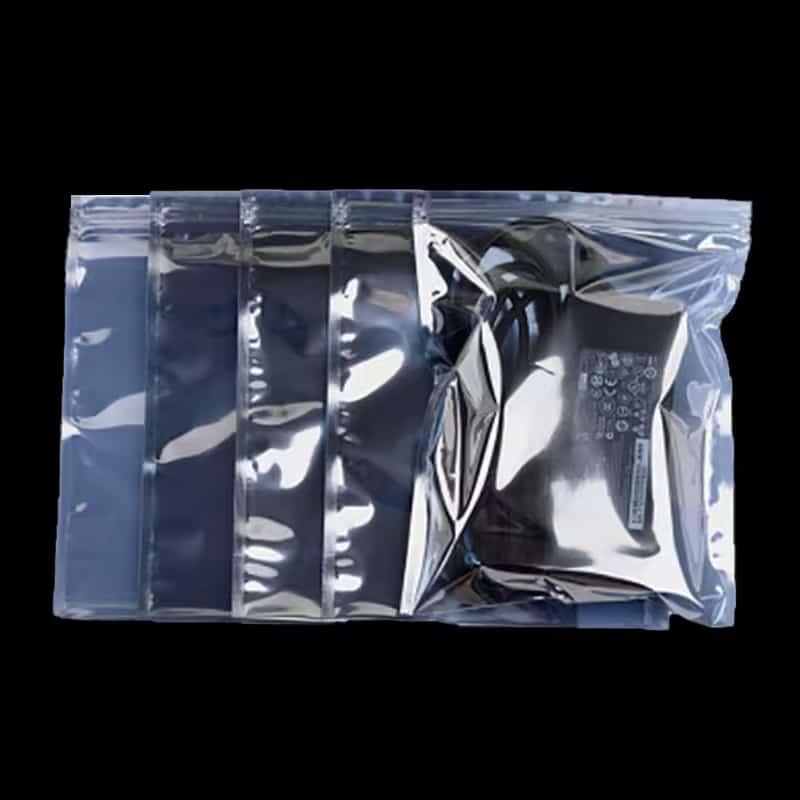Electrostatic Discharge Packaging Market: The Shift Toward Custom ESD Packaging Solutions

The electrostatic discharge (ESD) packaging market plays a vital role in protecting sensitive electronic components from damage caused by electrostatic discharges, which can lead to malfunction or failure of critical devices. As electronic products become smaller, more powerful, and increasingly complex, the need for customized ESD packaging solutions is growing. Over the past few years, there has been a marked shift toward tailor-made packaging solutions that cater specifically to the unique needs of different industries and electronic components.
The Evolution of ESD Packaging
Traditionally, ESD packaging has relied on standardized solutions like conductive bags, foam, and trays to shield electronics from static electricity. While these solutions have served the industry well, they are often not optimized for specific applications or individual products. As consumer demand for advanced electronics continues to rise, the limitations of off-the-shelf packaging solutions have become more apparent. For example, devices such as semiconductors, microprocessors, and other high-tech components require specialized packaging materials that not only prevent static buildup but also provide other protective features, such as moisture resistance, cushioning, and the ability to withstand specific environmental conditions.
Factors Driving the Shift Toward Custom ESD Packaging
Several factors are driving the demand for custom ESD packaging solutions, ranging from the complexity of modern electronics to the increasing focus on supply chain efficiency and sustainability. These include:
-
Increased Sensitivity of Electronic Components: As electronics continue to become smaller and more sophisticated, the components within these devices are becoming increasingly sensitive to electrostatic discharge. For example, components like integrated circuits, microchips, and flat-panel displays require more delicate handling and protection than ever before. Standard ESD packaging solutions often fail to offer the level of specificity and customization needed to protect these high-value components.
Custom ESD packaging allows manufacturers to design solutions that meet the exact needs of individual products. Tailored solutions can be engineered to provide precise levels of conductivity, cushioning, and environmental protection, ensuring that the components remain safe throughout their journey in the supply chain.
-
Diverse Industry Requirements: Different industries—ranging from consumer electronics to automotive, aerospace, and medical devices—have distinct requirements when it comes to ESD protection. For example, packaging used in the semiconductor industry may need to meet stricter moisture barrier levels compared to packaging for consumer electronics. Similarly, automotive electronics require ESD packaging that can withstand harsher environmental conditions, such as extreme temperatures or vibrations. As a result, the demand for industry-specific, custom-designed ESD solutions is rising.
-
Advancements in Technology: Technological advancements have made it possible to create more specialized materials and designs that provide better protection against ESD. Custom ESD packaging can leverage innovations in conductive coatings, dissipative foams, and electrostatic shielding to provide superior protection tailored to specific products. Additionally, the development of new materials such as biodegradable or recyclable options is allowing for the design of packaging solutions that are both effective and environmentally friendly, further pushing the demand for customized solutions.
-
Cost-Effectiveness and Efficiency: While off-the-shelf ESD packaging solutions may seem cost-effective in the short term, they often lead to inefficiencies in the long run. Standard packaging may not maximize the use of space, leading to unnecessary waste, higher shipping costs, or damage during transport. By opting for custom ESD packaging, companies can optimize packaging designs to reduce costs associated with logistics, inventory management, and handling, thus improving overall supply chain efficiency. Custom solutions also help ensure that products are properly protected, reducing the risk of damage, returns, or costly repairs, which can have a significant impact on profitability.
-
Sustainability Concerns: As sustainability continues to be a top priority across industries, businesses are looking for ways to reduce their environmental impact. Custom ESD packaging solutions provide an opportunity to incorporate sustainable materials, such as biodegradable plastics or recycled content, into the packaging design. By using custom packaging, manufacturers can minimize waste and reduce the overall environmental footprint of their packaging materials, contributing to corporate social responsibility (CSR) goals and meeting growing consumer demand for eco-friendly products.
Market Analysis: The Rise of Custom ESD Packaging Solutions
The demand for custom ESD packaging solutions is expected to continue growing as industries seek more efficient, effective, and environmentally responsible ways to protect their electronic components. The market for custom solutions is gaining traction across various verticals, including consumer electronics, automotive, medical devices, and industrial electronics, each with its own set of unique challenges and requirements.
The automotive industry is another key driver of the custom ESD packaging market. With the increasing use of electronics in vehicles, particularly in electric vehicles (EVs) and autonomous systems, custom ESD packaging is required to protect sensitive components from the effects of electrostatic discharge during manufacturing and delivery. This trend is expected to expand as the automotive industry continues to incorporate more electronics into vehicles for safety, infotainment, and autonomous driving systems.
- Art
- Causes
- Crafts
- Dance
- Drinks
- Film
- Fitness
- Food
- Spiele
- Gardening
- Health
- Startseite
- Literature
- Music
- Networking
- Andere
- Party
- Religion
- Shopping
- Sports
- Theater
- Wellness


